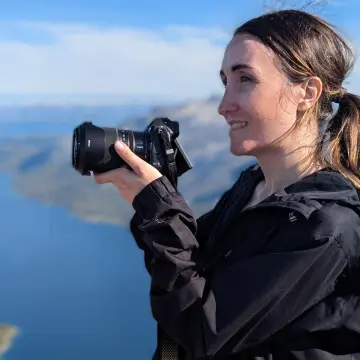
Russia is modernising its meteorological stations along the Northern Sea Route
In anticipation of future shipping, dozens of stations above the Arctic Circle are being upgraded.
“The Kotelny Island aerological station is undergoing a complete modernization!" - Russian Federal Service for Hydrometeorology and Environmental Monitoring (Roshydromet) reported in September this year on its social media. - "The following structures have already been built at the new location: a service building, diesel and gas generator building, garage, five fuel tanks”.

The Kotelny aerological station is located in the Republic of Sakha, between the Laptev Sea and the East Siberian Sea. It is also home to the Severny Klever military air base.
According to open sources, the meteorological station's primary role is to collect data on pressure, temperature, humidity and wind.
The Kotelny upgrade is just a small part of what appears to be a much larger modernisation programme for meteorological stations across the Russian Arctic, which covers 53% of the Arctic Ocean's coastline.

Russian officials have named the development of the Northern Sea Route as the main reason for such investment.
In his speeches, Vladimir Putin often emphasises the importance of this route for Russia:
"Due to climate change, as everyone knows and is already talking about, there is reason to believe, let's say cautiously, that the volume of transportation may sharply increase ... - Putin said in August this year during his speech at the The All-Russian Scientific Research Institute of Experimental Physics in the town of Sarov, - "But even if that doesn't happen, we have the icebreaker fleet that we are planning – we have eight nuclear icebreakers, no other country in the world has such a fleet, and we are also planning four more in the near future, I think...".
“Currently, 7 drifting weather stations have been installed, and another 42 will be deployed in 2023, - Alexander Makarov, Director of the Arctic and Antarctic Research Institute said in December 2022. “Thus, the number of weather stations will be increased sixfold. Covering the entire Northern Sea Route zone and the adjacent part of the Arctic basin with drifting and stationary weather stations will allow us to receive hourly direct observations of ice and meteorological parameters in the region".
The Arctic and Antarctic Research Institute (AARI) representative also emphasised that by 2024, Russia was supposed to create “a new high-precision hydrometeorological network in the marine and coastal areas …” with the help of drifting buoys.
The Minister of Natural Resources and Environment, Aleksander Kozlov, said earlier that there are 240 Russian meteorological stations located in the Arctic. Of these, 172 monitor meteorology, 33 monitor hydrology and 27 provide aerological data. However, it is recognised that the number of stations is insufficient and that most of them are outdated, according to a report by the Russian state-controlled news agency Interfax.
According to Kozlov, the current number of stations is not enough to achieve the goal of developing the Northern Sea Route.
"In the Arctic, we need at least another 25 automatic weather stations. But we understand that these are plans for after 2024. The stations will allow us to obtain data from the most remote areas, where it is physically difficult to install a hydrometeorological station; and will increase the accuracy of forecasts by 4-6%,” Kozlov is quoted as saying by Interfax.
In June 2022, the Russian state-controlled newspaper Vedomosti reported on the modernisation of 49 weather stations in an area stretching from Svalbard to Wrangel Island.
“Automated meteorological complexes were delivered and installed using all available modes of transport in the Arctic, including the research vessels Mikhail Somov and Professor Molchanov, - the newspaper reported. “These complexes measure parameters such as air temperature and humidity, atmospheric pressure, and wind speed and direction”.














